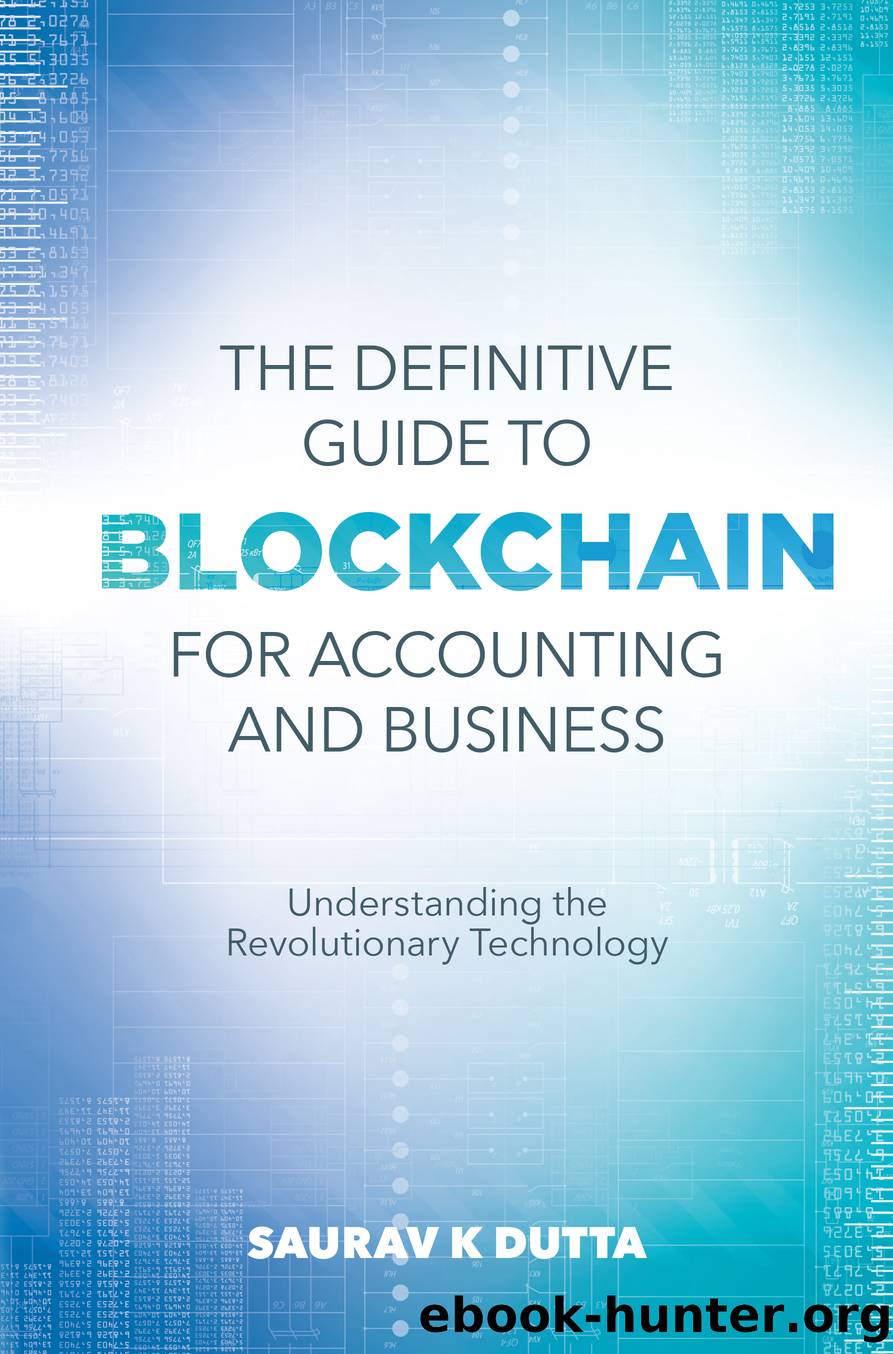The Definitive Guide to Blockchain for Accounting and Business by Saurav K. Dutta

Author:Saurav K. Dutta
Language: eng
Format: epub
ISBN: 9781789738674
Publisher: Emerald Publishing Limited
Published: 2020-09-10T00:00:00+00:00
Fig. 8.5: Securitizeâs DS Protocol Ecosystem.
Before issuance, each CEO tokenâs smart contract had its transfer capabilities uploaded so that they check using the Compliance Service if tokens can be exchanged between specific wallet addresses. When DS Token contracts send transferTo and transferFrom validation calls, the Compliance Service checks the sender and receiver address in the Registry Service, where each investorâs profile and related compliance information is stored on-chain. After obtaining the investor profiles, the Compliance Service validates that both have the correct categories, and are within the existing limits given the appropriate regulation. If everything checks out, then the trade can occur on the exchange. If the appropriate conditions are not met, the transaction will be stopped and the parties will be informed of the reason.
It is important to recognize the Trust Service as a key component in the DS Protocol architecture. The Trust Service is used by the other components to ensure that a given actor or DS App is permitted to take certain actions. It serves as a control for the other DS Services, all actors involved in those services have previously been authorized to perform the related functions by the Trust Service. For example, the Trust Service ultimately authorizes an exchange to introduce additional entries into the Registry Service. As per the DS Protocol model, exchanges are delegated the responsibility of gathering KYC and accreditation information for new investors after the CEO token lock-up expires.
Restricted securities are typically traded in the direct participation program market (DPP), where there are major inefficiencies and problems in the clearing and settlement process. The lack of standardization and compatibility leads to a settlement process that averages six to eight weeks. Blockchains can offer a variety of solutions for the trading, clearing and settlement of restricted securities. Using distributed ledger technology, STEs can bring efficiency, clarity and interoperability to the fragmented DPP market.
OFNâs framework for transforming DPP market processes contains a uniform protocol for standardizing assets and data. The resulting interoperability creates a mechanism for tokenized trading to connect off-chain âtraditionalâ alternative assets and on-chain âdigitalâ assets like the CEO token. OFNâs white paper eloquently expounds the typical securities transaction lifecycle (STL), stating it âstarts with a trade initiated from an investor, either a buyer or a seller. Their broker sends the transaction to an exchange for processing, where it is matched with a corresponding counterparty. The exchange then sends this matched transaction to a central counterparty clearing house (CCP), where it is reconciled with the brokers to reduce default and counterparty risk. From there, the transaction is sent to settlement, where the investorâs custodians (who hold the assets and funds) work via the central securities depository (CSD) to ensure that assets and funds are transferred from one source to another. Finally, the transaction data is sent to the registrar or transfer agent of the underlying issuer to update their shareholder list and information.â
OFN places emphasis on the central role that CDSs and CCPs play in maintaining âtrustâ between parties in todayâs STL processes.
Download
This site does not store any files on its server. We only index and link to content provided by other sites. Please contact the content providers to delete copyright contents if any and email us, we'll remove relevant links or contents immediately.
Harry Potter and the Goblet Of Fire by J.K. Rowling(3036)
Never by Ken Follett(2877)
Shadow of Night by Deborah Harkness(2716)
Ogilvy on Advertising by David Ogilvy(2680)
Zero to IPO: Over $1 Trillion of Actionable Advice from the World's Most Successful Entrepreneurs by Frederic Kerrest(2387)
The Man Who Died Twice by Richard Osman(2293)
Machine Learning at Scale with H2O by Gregory Keys | David Whiting(2281)
Book of Life by Deborah Harkness(2263)
How Proust Can Change Your Life by Alain De Botton(2259)
My Brilliant Friend by Elena Ferrante(2221)
0041152001443424520 .pdf by Unknown(2218)
The Tipping Point by Malcolm Gladwell(2204)
How to Pay Zero Taxes, 2018 by Jeff A. Schnepper(2098)
Will by Will Smith(2039)
Purple Hibiscus by Chimamanda Ngozi Adichie(1981)
Hooked: A Dark, Contemporary Romance (Never After Series) by Emily McIntire(1944)
Borders by unknow(1785)
Rationality by Steven Pinker(1763)
Daughter of Smoke and Bone by Laini Taylor(1742)
